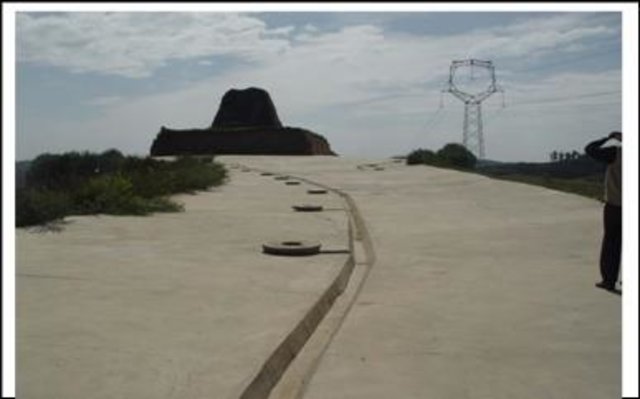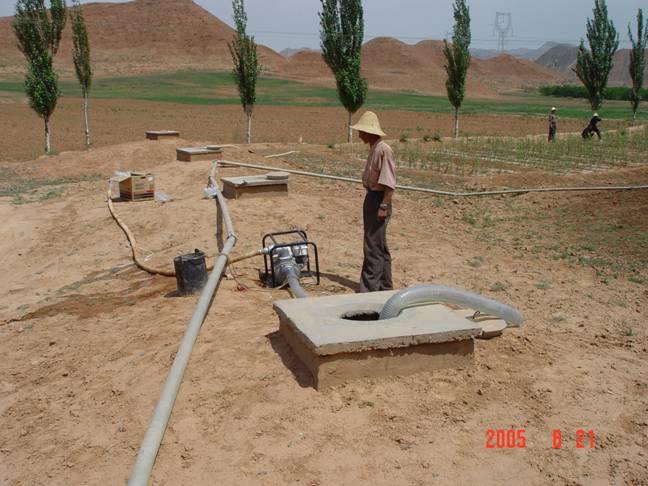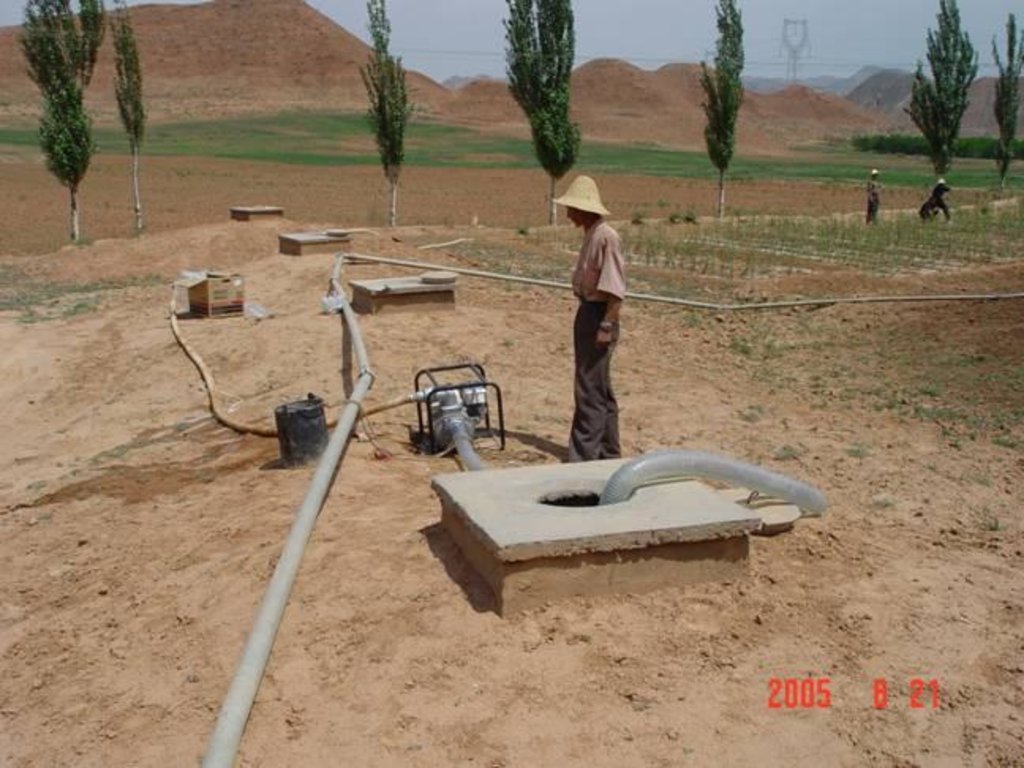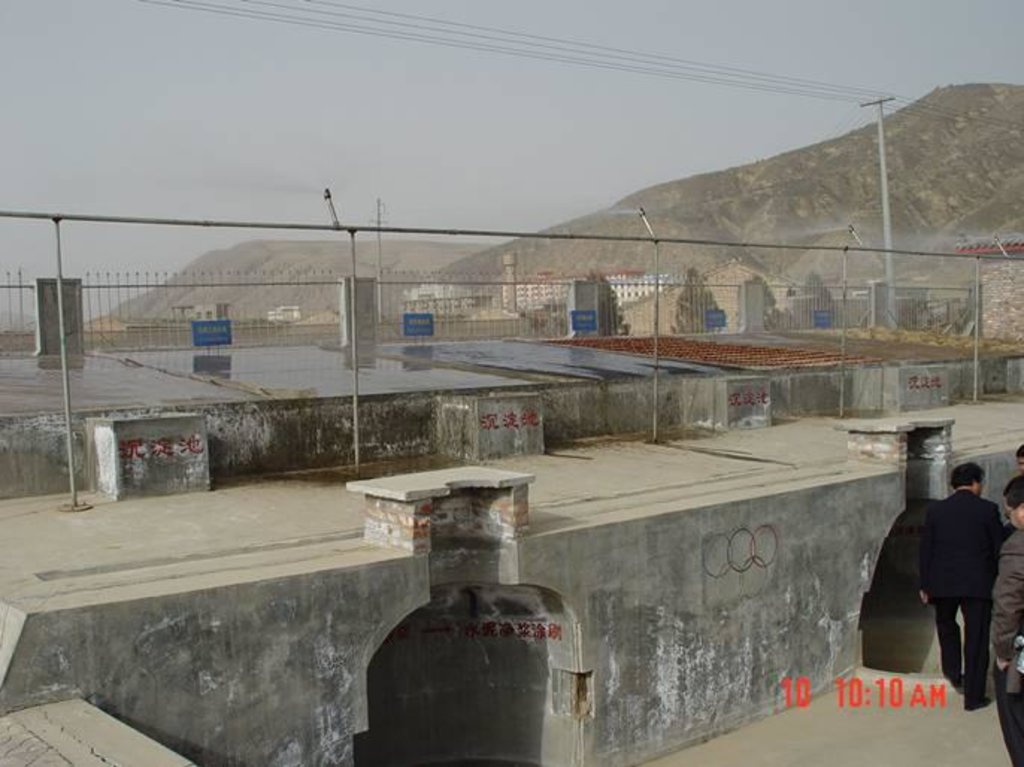Rainwater Cellars introduced through government support [จีน]
- ผู้สร้างสรรค์:
- การอัพเดท:
- ผู้รวบรวม: Anna Schuler
- ผู้เรียบเรียง: –
- ผู้ตรวจสอบ: Laura Ebneter
approaches_2432 - จีน
ดูส่วนย่อย
ขยายทั้งหมด ย่อทั้งหมด1. ข้อมูลทั่วไป
1.2 รายละเอียดที่ติดต่อได้ของผู้รวบรวมและองค์กรที่เกี่ยวข้องในการประเมินและการจัดเตรียมทำเอกสารของแนวทาง
ผู้เชี่ยวชาญ SLM:
Wang Yaolin
GEF/OP12 Project Implementation Office of Gansu (Gamsu Sand Control Research Institute)
Chen Zhengbin, Forestry Bureau of Anding District, Dingxi City, Gansu Province
จีน
ชื่อของโครงการซึ่งอำนวยความสะดวกในการทำเอกสารหรือการประเมินแนวทาง (ถ้าเกี่ยวข้อง)
CDE Centre for Development and Environment (CDE Centre for Development and Environment) - สวิตเซอร์แลนด์ชื่อของโครงการซึ่งอำนวยความสะดวกในการทำเอกสารหรือการประเมินแนวทาง (ถ้าเกี่ยวข้อง)
GEF/OP12 Gansu Project (GEF/OP12 Gansu Project) - จีน1.3 เงื่อนไขที่เกี่ยวข้องกับการใช้ข้อมูลที่ได้บันทึกไว้ผ่านทาง WOCAT
ผู้รวบรวมและวิทยากรหลักยอมรับเงื่อนไขเกี่ยวกับการใช้ข้อมูลที่ถูกบันทึกผ่านทาง WOCAT:
ใช่
1.4 การอ้างอิงถึงแบบสอบถามเรื่องเทคโนโลยี SLM

Rainwater Cellars [จีน]
The use of courtyard, roof, road surface, slope, etc. as catchments to collect rainwater for underground water storage for future supply of cropland irrigation as well as drinking water for humans and livestock.
- ผู้รวบรวม: Anna Schuler
2. คำอธิบายของแนวทาง SLM
2.1 การอธิบายแบบสั้น ๆ ของแนวทาง
Government takes the lead and propelled by project, the rainwater collection for irrigation technology scales up by demonstration.
2.2 การอธิบายอย่างละเอียดของแนวทาง
การอธิบายอย่างละเอียดของแนวทาง:
Dingxi County of Gansu Province is short of water resource. There is an old saying it's hard to exchange a cup of water for a cup of oil in Anding of Dingxi. During drought years, drinking water became a crisis and people had to walk dozens of miles to get water. With no self-relief capacity the local people live a hard life. To resolve water shortage, the most realistic method is to tap into the potential of local precipitation. Under the support of the Gansu provincial government, researches on rainwater collection were conducted during the period from 1988 to 1992 and water cellar technology was proven technically and economically feasible with its functions in preventing erosion, developing arid cropland and ecosystem recovery.
In 1994, the government disseminated water cellar technology in the northwestern part of the county covering 14 townships and 4376 households. After completion, the drinking water supply problem was mitigated for 22,000 people and 8700 animals. In 1995, a severe drought hit Gansu and the provincial government immediately initiated “1-2-1 Rainwater Collection Project, under which the government supplied cement and the local people provided sand/stone and labor to build water cellars. According to this project each household should build one water catchment with an area of100m2 made by concrete cement and two water cellars and one backyard cashcrop forest. By the end of 2000, a total of 57800 households were involved in the project to provide drinking water to 60,900 people and 333,900 heads of livestock. In addition, dryland farming has seen great development. Since 1996, water cellar technology has been diversified and evolved. The water collection fields have extended from roof and courtyard to road surface, ditch, hillside, land brink, etc and the application has been widened to scale livestock farming, spot watering and conservation irrigation of farmland based on the achievement of the 1-2-1 rainwater collection project. Moreover, water cellar technology has been gradually combined with greenhouse production, tourism agriculture, etc to form a development model integrating rainwater conservation irrigation, dryland farming and improved livelihood standards.
2.3 รูปภาพของแนวทาง
2.5 ประเทศ ภูมิภาค หรือสถานที่ตั้งที่ได้นำแนวทางไปใช้
ประเทศ:
จีน
ภูมิภาค/รัฐ/จังหวัด: :
Gansu
ข้อมูลเฉพาะเพิ่มเติมของสถานที่ตั้ง:
Anding
2.8 เป้าหมายหรือวัตถุประสงค์หลักของแนวทาง
Aims are to: establish a extension mechanism that promotes sustainable development and involves farmers participation; improve the farmers' knowledge about rainwater utilization; strengthen farmer participation and their confidence in overcoming difficulties; solve drinking water problem; eliminate poverty
The SLM Approach addressed the following problems: lack of effective grass-roots organization; backward economy and lack funds; farmers in lack of the knowledge of water cellar establishment and management; short of drinking water for human and domestic animals
2.9 เงื่อนไขที่เอื้ออำนวยหรือเป็นอุปสรรคต่อการนำเทคโนโลยีภายใต้แนวทางนี้ไปปฏิบัติใช้
การมีไว้ให้หรือการเข้าถึงแหล่งการเงินและบริการ
- เป็นอุปสรรค
Found shortage: Farmers cannot afford water cellar construction
Treatment through the SLM Approach: The dissemination approaches include trial operation, demonstration, training, household visit for publicity, media (TV), technical handouts and posters. The key organizer of the extension is the water resources bureau of Anding District.
อื่นๆ
- เป็นอุปสรรค
Knowledge/technology shortage: Short of knowledge of rainwater high efficiency utilization and related agricultureal technology
Treatment through the SLM Approach: Demonstration and training
3. การมีส่วนร่วมและบทบาทของผู้มีส่วนได้ส่วนเสียที่เกี่ยวข้อง
3.1 ผู้มีส่วนได้ส่วนเสียที่เกี่ยวข้องในแนวทางนี้และบทบาท
- ผู้ใช้ที่ดินระดับท้องถิ่นหรือชุมชนระดับท้องถิ่น
- ผู้เชี่ยวชาญ SLM หรือที่ปรึกษาการเกษตร
SWC experts
- รัฐบาลแห่งชาติ (ผู้วางแผน ผู้ทำการตัดสินใจ)
3.2 การเกี่ยวข้องของผู้ใช้ที่ดินระดับท้องถิ่นหรือชุมชนระดับท้องถิ่นในช่วงต่างๆของแนวทาง
| ความเกี่ยวข้องของผู้ใช้ที่ดินระดับท้องถิ่นหรือชุมชนระดับท้องถิ่น | ระบุผู้ที่มีส่วนเกี่ยวข้องและอธิบายกิจกรรม | |
|---|---|---|
| การริเริ่มหรือการจูงใจ | จ่ายเงินหรือสนับสนุนจากภายนอก | Meetings, household visits |
| การวางแผน | จ่ายเงินหรือสนับสนุนจากภายนอก | Participate in the survey and site location arrangement |
| การดำเนินการ | จ่ายเงินหรือสนับสนุนจากภายนอก | Labor input for technological implementation |
| การติดตามตรวจสอบหรือการประเมินผล | จ่ายเงินหรือสนับสนุนจากภายนอก | Observation, collaboration with the survey of the technicians |
| Research | จ่ายเงินหรือสนับสนุนจากภายนอก | Participate in the surveys |
3.4 การตัดสินใจเลือกใช้เทคโนโลยี SLM
ระบุผู้ที่ทำการตัดสินใจเลือกเทคโนโลยีมากกว่าหนึ่งวิธีไปปฏิบัติใช้:
- Land users and decision makers
การอธิบาย:
Decisions on the method of implementing the SLM Technology were made by land users alone (self-initiative / bottom-up). Land users or village leaders decided to build water cellars.
4. การสนับสนุนด้านเทคนิค การสร้างขีดความสามารถ และการจัดการด้านความรู้
4.1 การสร้างขีดความสามารถ / การอบรม
ได้มีการจัดอบรมให้แก่ผู้ใช้ที่ดินหรือผู้มีส่วนได้ส่วนเสียคนอื่น ๆ หรือไม่:
ใช่
ให้ระบุว่าใครเป็นผู้ได้รับการอบรม:
- ผู้ใช้ที่ดิน
รูปแบบการอบรม:
- ใช้พื้นที่ทำการสาธิต
- จัดการประชุมสู่สาธารณชน
- จัดคอร์ส
รูปแบบการอบรม:
- publicity brochures
หัวข้อที่พูด:
water cellar building and management, irrigation etc.
4.3 การเสริมความแข็งแกร่งให้กับสถาบัน (การพัฒนาองค์กร)
สถาบันได้รับการจัดตั้งขึ้นมาหรือเสริมความแข็งแกร่งโดยแนวทางนี้หรือไม่:
- ใช่ ปานกลาง
ระบุระดับของสถาบันที่ได้รับการเสริมความแข็งแกร่งหรือจัดตั้งขึ้นมา:
- ท้องถิ่น
- capacity building
ให้รายละเอียดเพิ่มเติม :
the technology application strengthened the capacity building of the local water resources departments. Application of the technology helped other projects related to water conservancy and poverty reduction.
4.4 การติดตามตรวจสอบและประเมินผล
ความคิดเห็น:
There were None changes in the Technology as a result of monitoring and evaluation: The technology itself has not evolved from sole water cellar development to an assembled technology with others. The financial resources o support water cellars have been changed from sole government to social funds, moreover, the farmers would actively asks for building water cellars.
4.5 การวิจัย
การวิจัยเป็นส่วนหนึ่งของแนวทางหรือไม่:
ใช่
ระบุหัวข้อเรื่อง:
- สังคมวิทยา
- เศรษฐศาสตร์หรือการตลาด
- นิเวศวิทยา
ให้ข้อมูลเพิ่มเติมและให้ระบุผู้ทำการวิจัย:
The research is conducted by provincial level researchers on the ecological, economic, social benefits of the water cellars, mainly.
5. การสนับสนุนด้านการเงินและวัสดุอุปกรณ์
5.1 ระบุงบประมาณประจำปีสำหรับแนวทาง SLM นี้
แสดงความคิดเห็น (แหล่งของการระดมทุน ผู้บริจาคคนสำคัญ):
Approach costs were met by the following donors: government (Local founds): 15.0%; other: 85.0%
5.2 การสนับสนุนด้านการเงิน / วัสดุอุปกรณ์ให้แก่ผู้ใช้ที่ดิน
ผู้ใช้ที่ดินได้รับการสนับสนุนด้านการเงิน / วัสดุอุปกรณ์ไปปฏิบัติใช้เทคโนโลยีหรือไม่:
ใช่
5.3 เงินสนับสนุนสำหรับปัจจัยนำเข้า (รวมถึงแรงงาน)
- วัสดุสำหรับการก่อสร้าง
| ระบุปัจจัยนำเข้าที่ได้รับการสนับสนุน | เห็นด้วยระดับไหน | ระบุเงินสนับสนุน |
|---|---|---|
| concrete cement | supplied free of charge by project | |
ความคิดเห็น:
Labor force is not paid
5.4 เครดิต
มีการจัดหาเครดิตมาให้ภายใต้แนวทาง SLM หรือไม่:
ใช่
ถ้าใช่ ระบุเงื่อนไข (อัตราดอกเบี้ย การชำระคืน):
repayment conditions: credits are sometimes used, with interest rate similar with that of commercial loan.
6. การวิเคราะห์ผลกระทบและการสรุป
6.1 ผลกระทบของแนวทาง
the technology intercepts runoffs, solves deficiency of water resources, and raises land productivity.
Did other land users / projects adopt the Approach?
- ไม่ใช่
- ใช่ เล็กน้อย
- ใช่ ปานกลาง
- ใช่ อย่างมาก
it has been adopted extensively by neighboring provinces. Chinese Women's Federation has initiated the public welfare program named 'Mothers Water Cellar' in northern China.
6.4 จุดแข็งและข้อได้เปรียบของแนวทาง
| จุดแข็ง / ข้อได้เปรียบของแนวทางในทัศนคติของผู้รวบรวมหรือวิทยากรหลัก |
|---|
| solve the problems of aridness and drinking water for human and livestock (How to sustain/ enhance this strength: continued project support) |
| strong extension mechanism (How to sustain/ enhance this strength: further strengthen the role of technical extension organizations) |
| Improve farmer's life (How to sustain/ enhance this strength: develop dryland agriculture industry) |
6.5 จุดอ่อน / ข้อเสียเปรียบของแนวทางและวิธีในการแก้ไข
| จุดอ่อน / ข้อเสียเปรียบในทัศนคติของผู้รวบรวมหรือวิทยากรหลัก | สามารถแก้ไขปัญหาได้อย่างไร |
|---|---|
| high investment for technology adoption | use of micro-credits, optimized use of farming technology for high benefit agriculture. |
| weak monitoring and evaluation | establish participatory monitoring and evaluation mechanism. |
7. การอ้างอิงและการเชื่อมต่อ
7.1 วิธีการหรือแหล่งข้อมูล
- ไปเยี่ยมชมภาคสนาม การสำรวจพื้นที่ภาคสนาม
- การสัมภาษณ์กับผู้ใช้ที่ดิน
ลิงก์และโมดูล
ขยายทั้งหมด ย่อทั้งหมดลิงก์

Rainwater Cellars [จีน]
The use of courtyard, roof, road surface, slope, etc. as catchments to collect rainwater for underground water storage for future supply of cropland irrigation as well as drinking water for humans and livestock.
- ผู้รวบรวม: Anna Schuler
โมดูล
ไม่มีโมดูล




